
تبلیغات

موضوعات

جستجو

پیوندهای روزانه

لینک دوستان
- دریافت رایگان این قالب
- سایت عاشقانه ماندگار فان
- سایت عاشقانه عشق آفرین
- جامعه رادیو اماتوری ایران
- سازمان تنظيم مقررات و ارتباطات راديوئي
- شرکت اروم الکترونیک
- فروشگاه قطعات الكترونيكي
- ARRL • Devoted Entirely to Amateur Radio
- درددل های یک بازنشسته
- نخستین سایت آموزشی رادیو آماتوری در ایران
- نشریات آماتوری
- EP2MRD
- QRZCQ - The database for radio hams
- شناسه تخصيص نحوه دستورالعمل ايستگاه به ارتباط راديويي هاي ) Call Sign ( دستورالعمل ارتباط شناسه تخصيص نحوه ايستگاه به راديويي
- رادیو آماتوری
- کلوپ رادیو آماتوری ایرانیان
- ارسال لینک

صفحات جانبی

امکانات جانبی
 آمار
وب سایت:
آمار
وب سایت:
بازدید دیروز : 319
بازدید هفته : 5304
بازدید ماه : 3603
بازدید کل : 2178895
تعداد مطالب : 673
تعداد نظرات : 121
تعداد آنلاین : 1
آكادمي مورس
با سلام
يكي از ارتباطات مهم در راديو آماتوري ارتباط تلگرافي است
فرستنده و گيرنده هاي ساده و برد زياد از امتيازات راديو تلگراف مي باشد
تمام خلبانها و اپراتورهاي مخابرات بايد با كلمات مورس آشنا و وارد باشند
يكي از سايتهاي خوب براي آموزش الفباي تلگرافي آكادمي مورس با آدرس زير مي باشد
www.lcwo.net
برنامه هاي متنوع و كاربردي زيادي دارد كه اميدوارم علاقمندان استفاده نمايند
موفق باشيد
نقشه راديو سنگري
با سلام
يكي از دوستان و خوانندگان عزيز مطلب راديو سنگري نقشه آنرا خواسته بودند كه در ذيل ارسال مي گردد
معرفی میکروکنترلر
http://www.centralclubs.com/pic16f84-t47611.html
توسط robotic » دوشنبه 1 مهر 1387 20:56
يك ميكرو كنترلر چيست؟
ميكرو كنترولر در واقع يك كامپيوتر تك تراشه اي ارزانقيمت ميباشد . كامپيوتر تك تراشه اي بدين معني است كه كل سيستم كامپيوتر در داخل تراشه مدار مجتمع جاي داده شده است . نخستين ويژگي ميكروكنترلر قابليت ذخيره سازي و اجراي برنامه است ( كه مهمترين ويژگي آن به شمار ميرود) . ميكرو كنترلر داراي يك CPU (واحد پردازشگر مركزي ) ، حافظه RAM ، حافظه ROM ، خطوط I/O ، (خطوط ورودي و خروجي ) ، درگاهاي سريال و موازي و زمان سنج است و برخي اوقات نيز شامل ادوات جانبي نظير مبدل A/D (مبدل آنالوگ به ديجيتال ) و مبدل D/A (مبدل ديجيتال به آنالوگ ميباشد .
چرا از ميكروكنترلر استفاده ميشود ؟
همان گونه كه قبلا توضيح داده شد ميكروكنترلر ها ، كامپيوتر هاي ارزانقيمت هستند . قابليت ذخيره سازي و اجراي برنامه هاي منحصر به فرد ، موجب شده است تا ميكرو كنترلر ها بسيار انعطاف پذير شوند . به عنوان مثال شخص ميتواند ميكروكنترلر را به گونه اي برنامه ريزي كند كه بر اساس شرايط از پيش تعيين شده (وضعيت خطوط ورودي و خروجي )، تصميم گيري نمايد . قابليت انجام عمليات رياضي و منطقي موجب شده است تا ميكرو كنترلر بتواند عملكرد مدارهاي منطقي پيچيده و مدارهاي الكترونيكي را تقليد كند.
برنامه هاي ديگر ميتوانند موجب شوند كه ميكرو كنترلر مشابه يك مدار در شبكه عصبي و يا به صورت يك كنترل كننده با منطق فازي عمل كند . ميكروكنترلر ها وظيفه هوش مصنوعي را در دستگاهاي مربوط به "حسابهاي هوشمند " در فروشگاهها بر عهده دارند.
آينده الكترونيك مختص ميكرو كترلر ها ميباشند :
اگر به مجله هاي الكترونيكي كه در كشورمان و در ساير كشورها چاپ ميشوند توجه كنيد مقاله هايي را مشاهده خواهيد كرد كه در طراحي مدارهاي آنها به طور مستقيم و يا به صورت تركيبي از ميكروكنترلر ها استفاده شده است . ميكروكنترلر ها به دليل انعطاف پذيري زيادي كه دارند با صرف هزينه اندك ميتوانند قدرت زياد ، كنترل و انتخابهاي مختلفي را ارائه كنند . به همين دليل است كه مهندسين الكترونيك و افرادي كه علاقه مند به كارهاي الكترونيكي هستند برنامه ريزي ميكروكنترلر ها را فر ميگيرند تا از مزاياي ميكروكنترلر ها در مدارات خود بهره ببرند و سطح كيفي مدار خود را در حد بالايي حفظ كنند .
اگر دستگاهاي الكترونيكي خانگي را بررسي كنيد خواهيد ديد كه از ميكروكنترلر ها تقريبا در تمامي آنها استفاده شده . اين نيز دليل ديگري براي آشنايي با ميكروكنترلر هاست .
سير تكاملي ميكرو كنترلر ها :
اولين ميكزوكنترلر ها در اواسط دهه 1970 ساخته شدند . اين ميكروكنترلر ها در ابتدا پردازنده هاي ماشين حساب بودند كه داراي حافظه برنامه كوچكي از نوع Rom ، حافظه داده بسيار محدود از نوع RAM و تعدادي درگاه ورودي خروجي بودند.
با توسعه فناوري سيليكن ، ميكروكنترلرهاي 8 بيتي قويتري ساخته شدند در اين ميكرو كنترلرها علاوه بر بهينه شدن دستور العمل ها تايمر/ شمارنده روي تراشه ، امكانات وقفه و كنترل بهينه شده خطوط I/O نيز به آنها اضافه شده است.
خانواده 8051 در اوايل دهه 1980 توسط شركت اينتل معرفي گرديد و از آن زمان 8051 به عنوان يكي از محبوبترين ميكروكنترلر ها بوده و بسياري از شركت هاي ديگر نيز به توليد آن اقدام كردند . امكاناتي نظير مبدل آنالوگ به ديجيتال ، حجم نسبتا بزرگ از حافظه برنامه و حافظه داده ، مدولاتور عرض پالس (PWM) در خروجي ها و حافظه فلش كه امكان پاك كردن و برنامه ريزي مجدد آن توسط سيگنال هاي الكتريكي وجود دارد ،در آن تعبيه شده است .
با توجه به اهميت و گسترش روز افزون كاربردهاي ميكرو كنترلر ها و محدوديت هائي كه ميكرو كنترلر ها ي خانواده MCS51 ايجاد ميكرد . شركت Microchip نسل جديدي از ميكرو كنترلر ها با عنوان PIC به بازار عرضه كرد . با توجه به قابليت بسيار زياد اين ميكروكنترلرها ، به سرعت مورد استقبال قرار گرفت و تحول بزرگي در استفاده از ميكروكنترلر ها ايجاد كرد .
كلمه PIC سرنام كلمات Programmable Interface Controller ميباشد كه شركت Microchip Technology آن را به عنوان علامت تجاري بر گزيده و از آن براي مشخص كردن ميكرو كنترلر هاي خود استفاده ميكند
ميكروكنترلرهاي خانواده PIC از معماري هاردوارد استفاده ميكنند . اين بدان معنا است كه كل حافظه به دو قسمت تقسيم شده است . كه عبارتند از : حافظه داده و حافظه برنامه .
مزيت اين معماري آن است كه ميتوان به هر دو بخش حافظه در يك دستورالعمل دسترسي داشت .
اغلب PIC ها داراي سه بلاك حافظه داخلي ميباشند :
۱_ Data memory : كه اين حافظه به Bank0 و Bank1 و ... تقسيم ميشوند .هر بانك شامل حافظه RAM معمولي (general purpose register) و ريجيستر هاي مخصوص (status,intcon,option,…) مي باشد.
2_ Eeprom memory : يكي از تفاوت هاي اصلي ميكروهاي گذشته مثل سري 8051 با PIC و AVR ، همين حافظه ميباشد. اين حافظه تقريبا بينابين RAM و ROM از نظر كاربرد ميباشد . اين حاظه به صورتي است كه ميتوان در حين برنامه نويسي ، اطلاعات را در آن ذخيره يا پاك كرد (RAM) واطلاعات آن در صورت قطعي برق نيز پاك نمي شود (ROM) . نسيت به RAM و ROM داراي سرعت به مراتب پايين تر ميباشد .
3_Program memory : برنامه اي كه توسط كاربر نوشته ميشود . در اين حافظه LOAD ميشود . به عنوان مثال PIC16F877 (40 پين) داراي پروگرام كانتر 13 بيتي براي آدرس دهي كردن Flash program memory به حجم (8k*14bit) ميباشد .
PIC ها از لحاظ نوع Program memory به 4 دسته تقسيم ميشوند .
1) Flash Program Memory
مزيت اين گونه PIC ها سرعت نسبتا بالاي خواندن اطلاعات از ROM و درنتيجه سرعت بالاتر اجراي عمليات ميباشد . حافظه هاي فلش موجب گرديده تا سرعت اجراي برنامه از 12 كلاك در 8051 به 4 كلاك در PIC و 1 كلاك در AVR كاهش يابد .
خانواده هايي كه نام IC داراي F باشد داراي اين گونه حافظه ميباشند (مانند 16F84 , 16F877.....) .
2) Eprom program memory
خانواده هايي كه نام IC داراي C يا CE باشد.(16C84)
3)Rom Program Memory
خانواده هايي كه نام IC داراي CR باشد (16CR84)
4) Eeprom Program Memory
همچنين بعضي از PIC ها نيز داراي رنج ولتاژي گسترده ميباشند كه داراي مشخصه Lدر نام IC مي باشد.(PIC16LF84)
ما در اين بيشتر در مورد ميكروهاي نوع اول بررسي ميكنيم ( يعني همان Flash Program Memory ها).
در بحث آينده در مورد ويژگي هاي PIC 16F84 صحبت خواهد شد و ولي قبل از آن توصيه ميكنم به DATA SHEET اين IC مراجعه كنيد و خودتان اطلاعاتي را در مورد آن كسب كنيد .
در صفحه اول Data Sheet شماي كلي و وضعيت پايه ها و ويژگيهاي كلي نوشته شده و در صفحات بعدي در مورد چگونگي كاربرد آن ( فعلا توصيه ميكنم صفحه اول اين Data Sheet را مطالعه كنيد )
اطلاعاتي كه Data Sheet دراختار ما قرار ميدهد :
در ابتدا PIC هاي از اين خانواده كه داراي ويژگي هاي يكسان ميباشند معرفي شده است .
درقسمت بعد مشخصه هاي CPU كه در اين ميكرو از نوع RISC (Reduce Instruction Set Computer )ميباشد گفته شده :
داراي 32 دستور العمل يك كلمه اي ميباشد (تعداد دستورات نسبت به ميكرو هاي ديگر به مراتب كمتر)
همه دستورالعمل ها در يك سيكل ( 4 Clock) اجرا ميشود .(سرعت آن 1.5 برابر 8051 با كريستال يكسان )
در قسمت بعد حداكثر فركانس كاري را 10MHz مشخص نموده است .
طبق جدول تراشه PIC16F84 داراي 1k كلمه (word) ( عرض هر كلمه برابر 14bit ) حافظه برنامه Flash ، 68 bytes حافظه داده (RAM) و 64 bytes حافظه Eeprom ميباشد . (در مورد اين حافظه ها ميتوانيد به قسمت قبل سر بزنيد ) .
پهناي هر دستورالعمل (flash program memory) 14 بيت و پهناي داده (data memory) 8 بيت ميباشد.
15*8 bits به ثبات داخلي ميكرو براي انجام عمليات هاي خاص (SFR)مانند option و Statuse و TMR0 و ..... تعبيه گرديده است و 8*8 bits جهت حافظه پشته (stack) (در قسمت بعد در مورد اين گونه حافظه ها توضيح داده خواهد شد ) .
داراي 4 منبع وقفه ميباشد (در اين مورد نيز در قسمت وقفه كامل توضيح داده خواهد شد ):
قابليت 1000 بار خواندن و نوشتن حافظه flash
قابليت 10.000.000 بار خواندن و نوشتن حافظه Eeprom
قابليت 40 سال نگهداري اطلاعات Eeprom
مشخصات جانبي :
داراي 13 پايه ورودي خروجي (دو درگاه ورودي- خروجي به نام A با 5 پايه و B با 8 پايه ) ، هر پين ورودي خروجي داراي مدار Latch ميباشد ، يعني هر بيت اطلاعات كه از طريق ميكرو به عنوان خروجي به پورت ريخته ميشود روي پورت باقي ميماند تا وقتي كه اطلاعات جديد روي آن ريخته شود . همچنين اگر هر بيت اطلاعات به عنوان ورودي روي پورت ها ريخته شود تا وقتي اطلاعات جديد وارد نگردد تغيير نميكند .
اغلب PIC ها در پورت B داراي pull up داخلي ضعيف ميباشند ( اين بدان معنا هست كه پايه ورودي با يك مقاومت پر اهم به Vcc متصل شده ) . بيت هفتم از رجيستر OPTION_REG مربوط به pull up ميباشد . اگر اين بيت صفر باشد pull up فعال ميشود و اگر يك باشد pull up غير فعال ميگردد. وقتي پايه اي به عنوان خروجي تعريف گردد pull up آن خود به خود غير فعال ميشود .
بيشترين جريان كه هر پايه ميتواند بدهد 20 mA است كه ميتواند يك LED را مستقيما روشن نمايد.
بيشترين جرياني كه ميتواند دريافت كند 25 mA ميباشد .
تايمر/كانتر 8 بيت (در اين مورد نيز بعدا مفصلا توضيح داده خواهد شد )
در قسمت بعد از خصوصيات برتر اين ميكرو كنترلر توضيح داده شده كه مهمترين آن محدوده ولتاژ كار ميكرو را بين 2تا 6 ولت مشخص نموده است و توان مصرفي ميكرو را در حالت هاي مختلف بيان نموده كه به شرح زير است :
با ولتاژ 5 ولت و فركانس 4MHz ، 2 ميلي آمپر
با ولتاژ 2 ولت با فركانس 32kHz ، 15 ميكرو آمپر
و در حالت Standby و ولتاژ 2 ولت ، 1 ميكرو آمپر
اين اطلاعاتي بود كه از صفحه اول data sheet ميكرو استخراج شده است كه در قسمت هاي بعد در مورد بعضي از قسمتهايي كه در برنامه نويسي به آنها احتياج داريم صحبت خواهيم كرد .
در قسمت آينده در مورد ثباتها و درگاه هاي ورودي و خروجي صحبت ميكنيم و تقريبا از قسمت آينده برنامه نويسي شروع خواهد شد .
معرفی پایه های میکرو PIC 16F84

در شکل تصویر میکروکنترلر رو می بینید به عنوان توضیح به ترتیب از بالا به پایین سمت چپ از 1 تا 9 و سمت راست از 10 تا 18 از پایین به بالا (سر میکرو رو به بالاست ) پایه ها معرفی می شوند.
پایه شماره ی یک1- به عنوان بیت سوم از پورت A است .( درسته که نوشته شده RA2 ولی این پورت A شماره گذاریش از صفر شروع میشه) /
پایه شماره دو2-به عنوان بیت چهارم از پورت A است .
پایه شماره سه3- بیت پنجم از پورت A
پایه شماره 4- پایه ی ریست این میکروکنترلر هستش که باید در حالت عادی با یک مقاوت به VCC تغذیه وصل باشد و برای ریست کردن باید لحظه ای به زمینGND وصل شود.
پایه شماره ی پنج5- به زمین GND وصل می شود.
پایه شماره ی شش 6- بیت اول پورت B
پایه شماره هفت 7-بیت دوم پورت B
پایه شماره هشت 8- بیت سوم پورت B
پایه شماره نه 9- بیت چهارم از پورت B
پایه شماره ده10- بیت پنجم پورت B
پایه شماره یازده 11-بیت ششم پورت B
پایه شماره دوازده 12-بیت هفتم پورت B
پایه شماره ی سیزده13-بیت هشتم پورت B
پایه شماره ی چهارده VDD یا همون VCC وی سی سی خودمون (به عنوان تغذیه )
پایه شماره پانزده به یک سر کریستال وصل می شه
پایه شماره شانزده به سر دیگر کریستال وصل میشه
پایه شماره ی هفده17- بیت اول پورت A
, پایه ی شماره ی 18 هجده -بیت دوم پورت A
.
آزمون راديو آماتوري
با سلام و آرزوي موفقيت دوستان شركت كننده در آزمون
ضمن تشكر و خسته نباشيد به طراح يا طراحان آزمون چند سوال در ذهن من شكل گرفت كه بد نيست كسي جواب بدهد
شرط سني براي گرفتن مجوز 16 سال است
داوطلب 16 ساله كه آرايش ترانزيستور رادانسته و بتواند محاسباط جريان كلكتور را با داشتن گين مدار انجام دهد را در كجا سراغ داريد مگر نابغه الكترونيك و مخابرات نه آماتور
شناختن وايت نويز و اثر آن را جز در كلاسهاي دانشگاه در رشته مخابرات تدريس مي شود مي دانند نه آماتور راننده تاكسي يا دكتر جراح مغز يا كاسب و بقال محل يا هزاران شخص و شغل ديگر ما مي گوئيم آماتور قانون مي گويد آماتور يعني غير حرفه اي و آقايان سوالات در حد مهندسي و كارشناسي رشته مخابرات و الكترونيك طراحي مي كنند
اگر نمي خواهيد مجوز بدهيد آبروي آماتوري را نبريد.
شمارا بجان عزيزتان خود طراح سوال جواب سوالات را بدون مراجعه به به كتاب و از حافظه خودش مي داند
از طراح امتحان بگيريد نصف بيشترسوالات را جواب نخواهد داد
از مطالب ارتباطات بين المللي كه در كشورهاي ديگر و ايستگاههاي ديگر استفاده نشده بود مثل كد Q به نظر من قصد برگزار كنندگان آزمون ندادن آن بوده فقط در حد رفع تكليف امتحاني برگزارشد و گرنه بخش بزرگي از راديو آماتوري ارتباط با بيرون مملكت است و متاسفانه طبق ليست خود رگولاتوري در ايران 13 نفر مجوز دارند پس شما برگزاركننده محترم از ندادن مجوز مطمئن بوده اي كه از بخش ارتباطات بين المللي و قوانين بيرون مملكت هيچ نپرسيده اي شايد هم جور ديگري فكر مي كني؟
من از سالهاي اول نوشتن و تدوين قانون راديوآماتوري و بعد جلسات در مديريت فركانس در حضور آقاي روشن فكر راد و سپس تلاش ها و پيگيري هاي مستمر آقاي بهمني كه بسيار جاي تشكر و تقدير دارد بهمراه دوستان و علاقمندان راديو آماتوري شركت داشته و پس از اولين آزمون در كلوپ داخل حياط سالن مديريت فركانس سالها كار كرده و تعدادي زياد كارت تائيد تماس با كال ساين ايستگاه پرانتز EP2MRD دارم
شما مي گوئيد آماتور من قيد مجوزم را زدم ولي اين كار هم درست نيست كه سطح آزمون را بحدي سخت بگيريد كه صداي پرسنل خود رگولاتوري كه همراه من در امتحان بودند هم در بيايد اگر مشكلي نداريد سوالات را علني بگذاريد تا مجامع راديو آماتوري راجع به سطح و ارتباط آن با راديو آماتوري بين المللي نظر بدهند
خلاصه
QRM Man-made interference QRN Natural noise or interference
QRP Low Power (< five watts) QRS Slow down Morse code speed
QRT Quitting - off the air QSB Signal is fading
QSL Acknowledge receipt (card) QSO Conversation ("cue-so")
QSY Change frequency QTH Location (think H for Home)
Log Record of QSOs CW Morse code (means Continuous Wave)
DX Distant (foreign stations) CQ Calling any station ("seek you")
OM Old man (male ham) YL Young lady (female ham)
Rig Radio Shack Room the radio is in
HI Laugh in Morse code 73, 88 Best regards, love and kisses
انواع مدولاسيون
A1A : Continuous Wave (CW) Double side-band telegraphy for aural reception which contains quatized digital information without the use of modulating subcarrier. (allotted to Grade II , Grade I and Advance Grade Licence holders)
A2A: Continuous Wave (CW) Double side-band telegraphy for aural reception, which contains quatized digital information with the use of modulating subcarrier.
A3E: Double side-band single channel analog transmission containing telephony (including sound broadcasting). Commonly known as AM (Amplitude Modulation).
H3E: Single side band, full carrier single channel analog transmission containing telephony (including sound broadcasting).
J3E: Single side band, suppressed carrier single channel analog transmission containing telephony (including sound broadcasting).
R3E: Single side band, reduced or variable-level carrier single channel analog transmission containing telephony (including sound broadcasting).
F3E: Frequency modulated single channel analog transmission containing telephony (including sound broadcasting).
F1B:Frequency modulated single channel telegraphy transmission containing quantized digital information for automatic reception.
F2A: Frequency modulated single channel telegraphy transmission containing quantized digital information for aural reception.
F2B: Frequency modulated single channel telegraphy transmission containing quantized digital information with modulating sub-carrier for automatic reception.
F3C: Frequency modulated single channel analog facsimile transmission.
A3C: Amplitude modulated double side-band single channel analog facsimile transmission.
A3F: Amplitude modulated double side-band single channel analog video transmission.
Each letter/digit of the designation of emission represent independent meaning as assigned to them.
Type of Modulation of the Main Carrier (First Symbol) Nature of signals modulating the main carrier (Second symbol) Type of information to be transmitted (Third symbol)
A-Double side-band Amplitude Modulation
H-Signle Sideband full carrier
R-Single Sideband reduced or variable level carrier
J-Single Sideband suppressed carrier
F-Frequency Modulation
G-Phase Modulation
P-Emission of Unmodulated Pulses
0-No modulating signal
1-A single channel containing quantized or digital information without the use of a modulating subcarrier.
2-A single channel containing quantized or digital information with the use of a modulating subcarrier
3-A single channel containing analog information
A-Telegraphy for aural reception
B-Telegraphy for automatic reception
C-Facsimile
D-Data transmission, telemetry, telecommand
E-Telephony (including sound broadcasting
F-Television (Video)
N-No information transmitted
W-Combination of the above
X-Cases not covered otherwise
Q code in english
Full international Q-code
This is the complete Q-code as it was defined for maritime radio communication. Since CW communication has been abandoned for this purpose, this code is probably no longer in use.
Here only the "question" part is shown, but every code can either be a question or an answer.
See also the informal amateur radio Q-code.
QRA What is the name of your station?
QRB How far approximately are you from my station?
QRC By what enterprise are the accounts for charges for your station settled?
QRD Where are you bound for and where are you from?
QRE What is your estimated time of arrival at ... (over ...)?
QRF Are you returning to ... ?
QRG Will you tell me my exact frequency (or that of ...)?
QRH Does my frequency vary?
QRI How is the tone of my transmission?
QRJ How many radiotelephone calls have you to book?
QRK What is the intelligibility of my signals (or those of ...)?
QRL Are you busy?
QRM Are you being interfered with?
QRN Are you troubled by static?
QRO Shall I increase transmitter power?
QRP Shall I decrease transmitter power?
QRQ Shall I send faster?
QRR Are you ready for automatic operation?
QRS Shall I send more slowly?
QRT Shall I stop sending?
QRU Have you anything for me?
QRV Are you ready?
QRW Shall I inform ... that you are calling him on ... kHz (or MHz)?
QRX When will you call me again?
QRY What is my turn?
QRZ Who is calling me?
QSA What is the strength of my signals (or those of ...)?
QSB Are my signals fading?
QSC Are you a cargo vessel?
QSD Is my keying defective?
QSE What is the estimated drift of the survival craft?
QSF Have you effected rescue?
QSG Shall I send ... telegrams at a time?
QSH Are you able to home on your direction-finding equipment?
QSI I have been unable to break in on your transmission.
QSJ What is the charge to be collected to ... including your internal charge?
QSK Can you hear me between your signals and if so can I break in on your transmission?
QSL Can you acknowledge receipt?
QSM Shall I repeat the last telegram which I sent you (or some previous telegram)?
QSN Did you hear me (or ... ) on ... kHz (or MHz)?
QSO Can you communicate with ... direct (or by relay)?
QSP Will you relay to ... free of charge?
QSQ Have you a doctor on board (or is ... on board)?
QSR Shall I repeat the call on the calling frequency?
QSS What working frequency will you use?
QSU Shall I send or reply on this frequency (or on ... kHz (or MHz))
QSV Shall I send a series of Vs on this frequency (or on ... kHz (or MHz))?
QSW Will you send on this frequency (or on ... kHz (or MHz))
QSX Will you listen to ... on ... kHz (or MHz)?
QSY Shall I change to transmission on another frequency?
QSZ Shall I send each word or group more than once?
QTA Shall I cancel telegram (or message) number ... ?
QTB Do you agree with my counting of words?
QTC How many telegrams have you to send?
QTD What has the rescue vessel or rescue aircraft recovered?
QTE What is my true bearing from you?
QTF Will you give me my position according to your bearings?
QTG Will you send two dashes of ten seconds each followed by your call sign (repeated ... times) (on ... kHz (or MHz))?
QTH What is your position in latitude and longitude?
QTI What is your true track?
QTI What is your true course?
QTJ What is your speed?
QTK What is the speed of your aircraft in relation to the surface of the Earth?
QTL What is your true heading?
QTM What is your magnetic heading?
QTN At what time did you depart from ... (place)?
QTO Have you left dock (or port)?
QTP Are you going to enter dock (or port)?
QTQ Can you communicate with my station by means of the International Code of Signals?
QTR What is the correct time?
QTS Will you send your call sign for tuning purposes or so that your frequency can be measured now (or at ... hours) on ... kHz (or MHz)?
QTT The identification signal which follows is superimposed on another transmission.
QTU What are the hours during which your station is open?
QTV Shall I stand guard for you on the frequency of ... kHz (or MHz) (from ... to ... hours)?
QTW What is the condition of survivors?
QTX Will you keep your station open for further communication with me until further notice (or until ... hours)?
QTY Are you proceeding to the position of incident and if so when do you expect to arrive?
QTZ Are you continuing the search?
QUA Have you news of ... ?
QUB Can you give me in the following order information concerning: the direction in degrees and speed of the surface wind, visibility, present weather, and amount, type and height of base of cloud above surface elevation at ... ?
QUC What is the number (or other indication) of the last message you received from me (or from ...)?
QUD Have you received the urgency signal sent by ... (call sign of mobile station)?
QUE Can you use telephony in ... (language), with interpreter if necessary; if so, on what frequencies?
QUF Have you received the distress signal sent by ...?
QUG Will you be forced to alight (or land)?
QUH Will you give me the present barometric pressure at sea level?
QUI Are your navigation lights working?
QUJ Will you indicate the true track to reach you (or ...)?
QUK Can you tell me the condition of the sea observed at ...?
QUL Can you tell me the swell observed at ...?
QUM May I resume normal working?
QUN Will vessels in my immediate vicinity please indicate their position, course and speed?
QUO Shall I search for ... (aircraft, ship, survival craft)?
QUP Will you indicate your position by searchlight, black smoke trail, pyrotechnic lights?
QUQ Shall I train my searchlight nearly vertical on a cloud, and if your aircraft is seen, deflect the beam up wind and on the water?
QUR Have survivors ... (1. received survival equipment, 2. been picked up by rescue vessel, 3. been reached by ground rescue) party?
QUS Have you sighted survivors or wreckage?
QUT Is position of incident marked?
QUU Shall I home ship or aircraft to my position?
QUW Are you in the search area designated as ...?
QUX Do you have any navigational warnings or gale warnings in force?
QUY Is position of survival craft marked?
QUZ May I resume restricted working?
q code
QAP -- Shall I listen for you (or for ...) on ... kHz ? Listen for me (or for ...) on ... kHz.
QBM -- Has ... sent any messages for me? Here is the message sent by ... at ... hours.
QCB -- Delay ? Delay is being caused by ... 1) your transmitting out of turn 2) Your slowness in answering 3) lack of your reply to my ...
QCS -- My reception on ... frequency has broken down.
QCX -- What is your full call sign? My full call sign is ... OR Use your full call sign until further notice
QDB -- Have you sent message... to ...? I have sent message ... to ...
QIC -- May I establish communication with ... radio station on ... kHz now (or at ... hours)? Establish communication with ... radio station on ... kHz now (or at ...hours)
QIF -- What frequency is ... using? ... is using ... kHz
QMH -- Shift to transmit and receive on ... kHz; if communication is not established within 5 minutes, revert to present frequency. Shift to transmit and receive on ... khz.; if communication is not established within 5 minutes, revert to present frequency.
QRA -- What is the name of your station? The name of my station is ...
QRB -- How far are you from my station? I am 502 km from you station.
QRD -- Where are you bound and where are you coming from? I am bound ... from ...
QRG -- Will you tell me my exact frequency? Your exact frequency is ... kHz.
QRH -- Does my frequency vary? Your frequency varies...
QRI -- How is the tone of my transmission? The tone of your transmission is 5; 1=Good, 2=Variable, 3=Bad...
QRJ -- Are you receiving me badly? I cannot receive you, your signal is too weak.
QRK -- What is the intelligibility of my signals? The intelligibility of your signals is 4,, 1=Bad, 2=Poor, 3=Fair, 4=Good, 5=Excellent.
QRL -- Are you busy? I am busy, please do not interfere.
QRM -- Is my transmission being interfered with? Your transmission is being interfered with 1; 1=Nil, 2=Slightly, 3=Moderately, 4=Severly, 5=Extremely.
QRN -- Are you troubled by static? I am troubled by static 1; as under QRM.
QRO -- Shall I increase power? Increase power.
QRP -- Shall I decrease power? Decrease power.
QRQ -- Shall I send faster? Send faster , e.g.15 WPM.
QRR -- Are you ready for automatic operation? I am ready for automatic operation. Send at ... WPM.
QRS -- Shall I send more slowly? Send more slowly ... WPM.
QRT -- Shall I stop sending? Stop sending.
QRU -- Have you anything for me? I have nothing for you.
QRV -- Are you ready? I am ready.
QRW -- Shall I inform ... that you are calling? Please inform .....that I am calling.
QRX -- When will you call me again? I will call you again at 3 PM hours.
QRY -- What is my turn? Your turn is numbered 5.
QRZ -- Who is calling me? You are being called by ...
QSA -- What is the strength of my signals? The strength of your signals is 5; 1=Scarcely perceptible, 2=Weak, 3=Fairly Good, 4=Good, 5=Very Good.
QSB -- Are my signals fading? Your signals are fading.
QSD -- Is my keying defective? Your keying is defective.
QSG -- Shall I send 2 messages at a time? Send 3 messages at a time.
QSI -- Unable To Break in.I have been unable to break in on your transmission. Or .. Will you inform ...(callsign) that I have been unable to break in on his transmission on ... khz.
QSJ -- What is the charge to be collected per word to ... including your international telegraph charge? The charge to be collected per word is ...including my international telegraph charge.
QSK -- Can you hear me between you signals and if so can I break in on your transmission? I can hear you between my signals, break in on my transmission.
QSL -- Can you acknowledge receipt? I am acknowledging receipt.
QSM -- Shall I repeat the last message which I sent you? Repeat the last message.
QSN -- Did you hear me on ... kHz? I did hear you on ... kHz.
QSO -- Can you communicate with ... direct or by relay? I can communicate with ...direct,or by relay through ...
QSP -- Will you relay to ...? I will relay to ...
QSQ -- Have you a doctor on board? ,or is ... on board? I have a doctor on board,or ... is on board.
QSU -- Shall I send or reply on this frequency? Send a series of Vs on this frequency.
QSV -- Shall I send a series of Vs on this frequency? Send a series of Vs on this frequency.
QSW -- Will you send on this frequency? I am going to send on this frequency.
QSY -- Shall I change to another frequency? Change to another frequency.
QSZ -- Shall I send each word or group more than once? Send each word or group twice,or ... times.
QTA -- Shall I cancel message number ...? Cancel message number ...
QTB -- Do you agree with my counting of words? I do not agree with your counting of words. I will repeat the first letter or digit of each word or group.
QTC -- How many messages have you to send? I have ... messages for you.
QTE -- What is my true bearing from you? Your true bearing from me is ... degrees.
QTG -- Will you send two dashes of 10 seconds each followed by your call sign? I am going to send two dashes of 10 seconds each followed by my call sign.
QTH -- What is your location? My location is ...
QTI -- What is your true track? My true track is ... degrees.
QTJ -- What is your speed? My speed is ... km/h.
QTL -- What is your true heading? My true heading is ... degrees.
QTN -- At what time did you depart from ...? I departed from ...at ... hours.
QTO -- Have you left dock or port? I have left dock (or port).
QTP -- Are you going to enter dock (or port)? I am going to enter dock (or port.).
QTQ -- Can you communicate with my station by means of the International Code of Signals? I am going to communicate with your station by means of the International Code of Signals.
QTR -- What is the correct time? The time is ...
QTS -- Will you send your call sign for ... minutes so that your frequency can be measured? I will send my call sign for ... minutes so that my frequency may be measured.
QTU -- What are the hours during which your station is open? My station is open from ... hours to ... hours.
QTV -- Shall I stand guard for you on the frequency of ... kHz? Stand guard for me on the frequency of ...kHz.
QTX -- Will you keep your station open for further communication with me? I will keep my station open for further communication with you.
QUA -- Have you news of ...? I have news of ...
QUB -- Can you give me information concerning visibility,height of clouds,direction and velocity of ground wind at ...? Here is the information you requested.
QUC -- What is the number of the last message you received from me? The number of the last message I received from you is ...
QUD -- Have you received the urgency signal sent by ... ? I have received the urgency signal sent by ...
QUF -- Have you received the distress signal sent by ...? I have received the distress signal sent by ...
QUG -- Will you be forced to land? I am forced to land immediately.
QUH -- Will you give me the present barometric pressure? The present barometric pressure is ...(units).
QUE -- Can you use telephony on ...khz or Can you speak in ...(language), - with interpreter if necessary; if so, on what frequencies?? I can use telephony on...khz or I can speak in ... (language) on ... kHz.
QRF -- Are you returning to...? I am returning to... or return to ...
QAZ -- storm here,I am closing station
QLF -- you are keying with your left foot
QLZ -- nothing of it,I am too lazy
QQQ -- I must close,explanations later
QSLL -- let's exchange qsl cards
QSLN -- let's dont exchange qsl cards
QSUF -- let's talk by land line
QWX -- weather conditions
QSX -- I am listening ... khz up/down. Will you listen to ... (call sign(s) on ... khz?
QRD -- Zdążamy do ...z ...
QRE -- Przypuszczalnie przybędziemy do...o...godzinie...
QRF -- Wracamy/Wracajcie do....
QRW -- Przekaż .... że wołam go na częstotliwosci...khz.
QRX -- Poczekaj,zawołam cię o godzinie...
QSK -- Mogę słuchać w przerwach nadawania BK
QSM -- Proszę powtórzyć RPT
QSN -- Słyszałem cię na ....khz
QSP -- przekaż komunikat do...
QSQ -- Nadawaj kazde słowo jeden raz
QST -- Komunikat dla wszystkich
QRRR -- znak niebezpieczeństwa na lądzie
QSU -- Nadawaj na .....khz
QSUF -- Proszę o łączność telefoniczną
QSW -- Przechodzę na częstotliwość...khz
QSX -- Słucham na cżęstotliwości...khz
QSY -- Przejdź na częstotliwość....khz
QSZ -- Nadawaj każde słowo 2 razy/lub...razy/
QTA -- Anuluj radiogram nr...
QTC -- Mam wiadomość dla ciebie
QTN -- Opuściliśmy to miejsce o .... godzinie...
QTU -- Pracuję od....do....
QTV -- Nasłuchuj za mnie na częstotliwości.... khz /od ...do...godziny/
QTX -- Będę w pogotowiu do dalszej łączności z wami
QUA -- Przekazuję wiadomości od....
QUH -- Ciśnienie barometryczne wynosi...
QUM -- Mogę już podjąć normalną pracę
QSLN -- Nie trzeba wysyłać karty QSL
QRV -- Jestem gotów do pracy
QRT -- Kończę nadawanie,przerwij nadawanie
QCWA Quarter Century Wireless Association (Club for amateur radio operators who have been licensed for over 25 years)
QAZ -- burza, wyłączam stację
QHL -- przeszukiwanie pasma od największej częstotliwości
QHM -- przeszukiwanie pasma od największej do średniej częstotliwości
QLH -- przeszukiwanie pasma od najmniejszej częstotliwości
QLM -- przeszukiwanie pasma od najmniejszej do średniej częstotliwości
QMH -- przeszukiwanie pasma od środkowej do największej częstotliwości
QML -- przeszukiwanie pasma od środkowej do najmniejszej częstotliwości
QQQ -- muszę przerwać łączność
QRA -- moja stacja nazywa się...
QRB -- odległość między naszymi stacjami wynosi ... km
QRG -- dokładna twoja częstotliwość jest ... khz
QRH -- twoja częstotliwość zmienia się QRI -- twój ton jest: 1-dobry, 2-zmienny, 3-zły
QRJ -- twoje sygnały są bardzo słabe, nieodbieralne
QRK -- czytelność waszych sygnałów jest 1 do 5
QRM -- mam przeszkody w odbiorze
QRO -- zwiększ moc
QRP -- zmniejsz moc
QRT -- kończę nadawanie, wyłączam stację
QRV -- jestem gotów do pracy
QRX -- proszę poczekać, zawołam cię o godzinie...
QRZ -- woła cię ..., kto mnie woła?
QSA -- siła waszych sygnałów jest 1 do 5
QSB -- wasze sygnały zanikają okresowo
QSD -- wasze kluczowanie jest nieprawidłowe
QSM -- proszę powtórzyć (rpt)
QSO -- mam łączność
QSP -- przekaż komunikat do...
QSQ -- nadawaj każde słowo jeden raz
QST -- komunikat do wszystkich
QSU -- nadawaj na częstotliwości...khz
QSV -- nadawaj V dla strojenia
QSW -- przechodzę na częstotliwość...khz
QSX -- słucham na częstotliwości...khz
QSY -- przejdź na częstotliwość...khz
QSZ -- nadawaj każde słowo (lub grupę) dwa razy
QTH -- moje geograficzne położenie jest...
QTR -- dokładny czas jest...
QTU -- pracuję od ... do ...
QUA -- przekazuję wiadomości od ...
QUH -- ciśnienie barometryczne wynosi...
QUE -- mogę pracować fonią
QWX -- stan pogody
phonetic alphabet
با سلام و آرزوي موفقيت براي داوطلبان آزمون فردا
Phonetic Alphabet Usually Heared On The Air, Q-Codes and RST
|
Phonetic Alphabet Usually Heared On The Air
Alpha, America, AbleBravo, Baker, Boston, Baltimore Charlie, Canada Delta, David, Denmark Echo, Ecuador, Easy, Eduard Foxtrot, Fox, Florida Golf, Guatemala, George Hotel, Henry, Honolulu India, Italia, Italy Juliet, Japan Kilo, Kilowatt, Kentucky, King Lima, London Mike, Mary, Mexico November, Norway, Nancy, Nicaragua Oscar, Ontario, Ocean Papa, Peter Quebec, Queen Romeo, Radio Sierra, Sugar, Santiago Tango, Texas, Tokyo Uniform, United, Union Victor, Victoria Whiskey, Washington X-Ray Yankee, Yokohama, Yellow,Yesterday Zoulou, Zebra, Zanzibar |
|
|
|
Readability R1 Unreadable.
S1 Faint, signals barely readable
Tl Extremely rough hissing note |
عيد غدير
بر عید غدیر عید اکبر صلوات
بر چهره ی نورانی حیدر صلوات
بر فاطمه این عید هزاران تبریک
بر یک یک اهل بیت کوثر صلوات
عید سعید غدیر خم مبارک باد
سمبل هاي قطعات در راديو
باسلام و تبريك ايام
.
Common electronic components symbols
1 Jack, coaxial or phono , 2 microphone , 3 headset , 4 double headset , 5 stereo headset , 6 speaker , 7 two-wire plug nonpolarized ,8 three-wire plug , 9 two-wire plug polarized , 10 two-wire outlet nonpolarized , 11 two-wire outlet polarized , 12 three-wire outlet ,13 signal generator source , 14 current source , 15 constant voltage source , 16 thermocouple , 17 thermocouple , 18 jumper , 19 relay , 20 solar battery , 21 battery , 22 solar cell , 23 antenna , 24 mono jack connector , 25 stereo jack connector , 26 ammeter , 27 voltmeter , 28 ohm meter , 29 fuse , 30 motor , 31 galvanometer , 32 ground , 33 incandescent lamp , 34 neon lamp , 35 lamp , 36 amplifier , 37 inverting amplifier , 38 operational amplifier .
|
|
transformers symbols
1 Transformer powdered-iron core , 2 Transformer powdered-iron core step-down , 3 Transformer powdered-iron core step-up , 4 Transformer powdered-iron core tapped primary , 5 Transformer powdered-iron core tapped secondary
Semiconductor symbols
1 Bipolar transistor NPN , 2 Bipolar transistor PNP , 3 Field-effect transistor N-channel , 4 Field-effect transistor P-channel , 5 MOS field-effect transistor N-channel , 6 Triac , 7 MOS field-effect transistor P-channel , 8 Photosensitive transistor NPN , 9 Photosensitive transistor PNP , 10 Photosensitive field-effect transistor N-channel , 11 Photosensitive field-effect transistor P-channel , 12 Unijunction transistor , 13 Diac , 14 Field-effect Diode, 15 Diode general symbol , 16 Gunn Diode , 17 Zener diode , 18 Pin Diode , 19 Schottky Diode , 20 Tunnel Diode , 21 Varactor Diode , 22 Diode general symbol , 23 Silicon-controlled rectifier , 24 Light-emitting Diode , 25 Optoisolator .
Inductor symbols
1 Air core inductor , 2 Bifilar air core inductor , 3 Tapped air core inductor , 4 Variable air core inductor , 5 Iron core inductor , 2 Bifilar iron core inductor , 3 Tapped iron core inductor , 4 Variable tapped core inductor
Switches components symbols
1 Open switch , 2 single pole double throw switch , 3 push button switch ( open push switch ) , 4 closed push switch , 5 double pole double throw switch .
Logic Gates symbols
1 EXNOR , 2 EXNORIEC, 3 EXOR , 4 EXORIEC , 5 NOT , 6 AND , 7 ANDIEC , 8 OR , 9 ORIEC , 10 NORIEC , 11 NOR ,12 NAND, 13 NANDIEC , 14 NOTIEC .
آزمون راديو آماتوري
باسلام
آدرس متن آزمون سال 80 جهت استفاده و اطلاع با اجازه سايت وزين WWW. EPHAMSHOP.COM
http://www.ephamshop.com/index.php/%D8%AF%D8%A7%D9%86%D9%84%D9%88%D8%AF.html
بعدا توضيحات بيشتر و سر فصل هاي آزمون را خواهم آورد
انشاء الله
1- قانون راديو آماتوري
مانند:
مرجع اخذ مجوز راديو آماتوري؟
استفاده تجاري از وسيله؟
مدت اعتبار گواهينامه؟
معني معرف يا CALL SIGN
پيشوند هاي خطاب ايران
مقررات اجرائي
در صورت مشاهده خطا؟
مدارك لازم در ايستگاه؟
انتقال و جابجائي دستگاه
حد اكثر توان خروجي و ارتفاع آنتن در نزديكي فرودگاه
موارد مورد اشاره در دفتر گزارشات يا LOG BOOK
فركانس مجاز كار در كلاس درجه 3
معاني كد هاي راديو آماتوري مانندQRZ-QTH-QSY-QRM-QRN-
معني PREFIX
اين اصطلاحات يعني چه: DX-SIMPLEX-SWR-NB-AGC-ATU-AVC-FM-PSK-FSK-USB-DSB-
خواص و ارتباط طبقات جوي و امواج راديوئي
كاربرد دستگاههاي اندازه گيري در راديو آماتوري مانند سيگنال جنراتورصوتي - راديوئي واتمتر راديوئي vswrمتر
اسيلوسكوپ FSM MOD.METER فركانس متر خازن-بوبين سنج
قوانين عمومي الكتريسيته مقاومت - جريان - ولت - توان
شيلدينگ و كاربرد آن در راديو
انواع آنتن ها و نحوه محاسبه طول و انتشار امواج در آنهاPATERN
نماد هاي عمومي الكترونيك و الكتريسيته و قطعات مانند انواع ديود ها ترانزيستورها بوبين ها
خواص مدارات عمومي الكترونيك مانند انواع ارايش ترانزيستورها
انواع فيلترها و نماد و كاربرد آنها
طبقات راديو و كاربرد و محل آنها مانند OSC. - MIXER- agc
موارد آزمون راديو آماتوري
NEW Technician Class Exam Question Pool
effective 7/01/2014 thru 6/30/2018Click to see the questions:
| Topic T1: | FCC Regulations | |||||||||||||||||||||||||||||||||||||||||||||||||||||||||||||||||||||||||||||||||||||||||||||||||
| T1A-2014: | Amateur Radio Service: purpose and permissible use of the Amateur Radio Service; operator/primary station license grant; where FCC rules are codified; basis and purpose of FCC rules; meanings of basic terms used in FCC rules; interference; spectrum management | |||||||||||||||||||||||||||||||||||||||||||||||||||||||||||||||||||||||||||||||||||||||||||||||||
| T1B-2014: | Authorized frequencies: frequency allocations; ITU regions; emission modes; restricted sub-bands; spectrum sharing; transmissions near band edges | |||||||||||||||||||||||||||||||||||||||||||||||||||||||||||||||||||||||||||||||||||||||||||||||||
| T1C-2014: | Operator licensing: operator classes; sequential, special event, and vanity call sign systems; international communications; reciprocal operation; station license and licensee; places where the amateur service is regulated by the FCC; name and address on FCC license database; license term; renewal; grace period | |||||||||||||||||||||||||||||||||||||||||||||||||||||||||||||||||||||||||||||||||||||||||||||||||
| T1D-2014: | Authorized and prohibited transmission: communications with other countries; music; exchange of information with other services; indecent language; compensation for use of station; retransmission of other amateur signals; codes and ciphers; sale of equipment; unidentified transmissions; broadcasting | |||||||||||||||||||||||||||||||||||||||||||||||||||||||||||||||||||||||||||||||||||||||||||||||||
| T1E-2014: | Control operator and control types: control operator required; eligibility; designation of control operator; privileges and duties; control point; local, automatic and remote control; location of control operator | |||||||||||||||||||||||||||||||||||||||||||||||||||||||||||||||||||||||||||||||||||||||||||||||||
| T1F-2014: | Station identification; repeaters; third party communications; club stations; FCC inspection | |||||||||||||||||||||||||||||||||||||||||||||||||||||||||||||||||||||||||||||||||||||||||||||||||
| Topic T2: | Operating Procedures | |||||||||||||||||||||||||||||||||||||||||||||||||||||||||||||||||||||||||||||||||||||||||||||||||
| T2A-2014: | Station operation: choosing an operating frequency; calling another station; test transmissions; procedural signs; use of minimum power; choosing an operating frequency; band plans; calling frequencies; repeater offsets | |||||||||||||||||||||||||||||||||||||||||||||||||||||||||||||||||||||||||||||||||||||||||||||||||
| T2B-2014: | VHF/UHF operating practices: SSB phone; FM repeater; simplex; splits and shifts; CTCSS; DTMF; tone squelch; carrier squelch; phonetics; operational problem resolution; Q signals | |||||||||||||||||||||||||||||||||||||||||||||||||||||||||||||||||||||||||||||||||||||||||||||||||
| T2C-2014: | Public service: emergency and non-emergency operations; applicability of FCC rules; RACES and ARES; net and traffic procedures; emergency restrictions | |||||||||||||||||||||||||||||||||||||||||||||||||||||||||||||||||||||||||||||||||||||||||||||||||
| Topic T3: | Radio Fundamentals | |||||||||||||||||||||||||||||||||||||||||||||||||||||||||||||||||||||||||||||||||||||||||||||||||
| T3A-2014: | Radio wave characteristics: how a radio signal travels; fading; multipath; wavelength vs. penetration; antenna orientation | |||||||||||||||||||||||||||||||||||||||||||||||||||||||||||||||||||||||||||||||||||||||||||||||||
| T3B-2014: | Radio and electromagnetic wave properties: the electromagnetic spectrum; wavelength vs. frequency; velocity of electromagnetic waves; calculating wavelength | |||||||||||||||||||||||||||||||||||||||||||||||||||||||||||||||||||||||||||||||||||||||||||||||||
| T3C-2014: | Propagation modes: line of sight; sporadic E; meteor and auroral scatter and reflections; tropospheric ducting; F layer skip; radio horizon | |||||||||||||||||||||||||||||||||||||||||||||||||||||||||||||||||||||||||||||||||||||||||||||||||
| Topic T4: | Amateur Radio Practices | |||||||||||||||||||||||||||||||||||||||||||||||||||||||||||||||||||||||||||||||||||||||||||||||||
| T4A-2014: | Station setup: connecting microphones; reducing unwanted emissions; power source; connecting a computer; RF grounding; connecting digital equipment; connecting an SWR meter | |||||||||||||||||||||||||||||||||||||||||||||||||||||||||||||||||||||||||||||||||||||||||||||||||
| T4B-2014: | Operating controls: tuning; use of filters; squelch function; AGC; repeater offset; memory channels | |||||||||||||||||||||||||||||||||||||||||||||||||||||||||||||||||||||||||||||||||||||||||||||||||
| Topic T5: | Electronic Principles | |||||||||||||||||||||||||||||||||||||||||||||||||||||||||||||||||||||||||||||||||||||||||||||||||
| T5A-2014: | Electrical principles, units, and terms: current and voltage; conductors and insulators; alternating and direct current | |||||||||||||||||||||||||||||||||||||||||||||||||||||||||||||||||||||||||||||||||||||||||||||||||
| T5B-2014: | Math for electronics: conversion of electrical units; decibels; the metric system | |||||||||||||||||||||||||||||||||||||||||||||||||||||||||||||||||||||||||||||||||||||||||||||||||
| T5C-2014: | Electronic principles: capacitance; inductance; current flow in circuits; alternating current; definition of RF; DC power calculations; impedance | |||||||||||||||||||||||||||||||||||||||||||||||||||||||||||||||||||||||||||||||||||||||||||||||||
| T5D-2014: | Ohm’s Law: formulas and usage | |||||||||||||||||||||||||||||||||||||||||||||||||||||||||||||||||||||||||||||||||||||||||||||||||
| Topic T6: | Electrical Components | |||||||||||||||||||||||||||||||||||||||||||||||||||||||||||||||||||||||||||||||||||||||||||||||||
| T6A-2014: | Electrical components: fixed and variable resistors; capacitors and inductors; fuses; switches; batteries | |||||||||||||||||||||||||||||||||||||||||||||||||||||||||||||||||||||||||||||||||||||||||||||||||
| T6B-2014: | Semiconductors: basic principles and applications of solid state devices; diodes and transistors | |||||||||||||||||||||||||||||||||||||||||||||||||||||||||||||||||||||||||||||||||||||||||||||||||
| T6C-2014: | Circuit diagrams; schematic symbols | |||||||||||||||||||||||||||||||||||||||||||||||||||||||||||||||||||||||||||||||||||||||||||||||||
| T6D-2014: | Component functions: rectification; switches; indicators; power supply components; resonant circuit; shielding; power transformers; integrated circuits | |||||||||||||||||||||||||||||||||||||||||||||||||||||||||||||||||||||||||||||||||||||||||||||||||
| Topic T7: | Station Equipment | |||||||||||||||||||||||||||||||||||||||||||||||||||||||||||||||||||||||||||||||||||||||||||||||||
| T7A-2014: | Station equipment: receivers; transmitters; transceivers; modulation; transverters; low power and weak signal operation; transmit and receive amplifiers | |||||||||||||||||||||||||||||||||||||||||||||||||||||||||||||||||||||||||||||||||||||||||||||||||
| T7B-2014: | Common transmitter and receiver problems: symptoms of overload and overdrive; distortion; causes of interference; interference and consumer electronics; part 15 devices; over and under modulation; RF feedback; off frequency signals; fading and noise; problems with digital communications interfaces | |||||||||||||||||||||||||||||||||||||||||||||||||||||||||||||||||||||||||||||||||||||||||||||||||
| T7C-2014: | Antenna measurements and troubleshooting: measuring SWR; dummy loads; coaxial cables; feed line failure modes | |||||||||||||||||||||||||||||||||||||||||||||||||||||||||||||||||||||||||||||||||||||||||||||||||
| T7D-2014: | Basic repair and testing: soldering; using basic test instruments; connecting a voltmeter, ammeter, or ohmmeter | |||||||||||||||||||||||||||||||||||||||||||||||||||||||||||||||||||||||||||||||||||||||||||||||||
| Topic T8: | Communication Modes and Methods | |||||||||||||||||||||||||||||||||||||||||||||||||||||||||||||||||||||||||||||||||||||||||||||||||
| T8A-2014: | Modulation modes: bandwidth of various signals; choice of emission type | |||||||||||||||||||||||||||||||||||||||||||||||||||||||||||||||||||||||||||||||||||||||||||||||||
| T8B-2014: | Amateur satellite operation; Doppler shift, basic orbits, operating protocols; control operator, transmitter power considerations; satellite tracking; digital modes | |||||||||||||||||||||||||||||||||||||||||||||||||||||||||||||||||||||||||||||||||||||||||||||||||
| T8C-2014: | Operating activities: radio direction finding; radio control; contests; linking over the Internet; grid locators | |||||||||||||||||||||||||||||||||||||||||||||||||||||||||||||||||||||||||||||||||||||||||||||||||
| T8D-2014: | Non-voice communications: image signals; digital modes; CW; packet; PSK31; APRS; error detection and correction; NTSC | |||||||||||||||||||||||||||||||||||||||||||||||||||||||||||||||||||||||||||||||||||||||||||||||||
| Topic T9: | Antennas and Feed Lines | |||||||||||||||||||||||||||||||||||||||||||||||||||||||||||||||||||||||||||||||||||||||||||||||||
| T9A-2014: | Antennas: vertical and horizontal polarization; concept of gain; common portable and mobile antennas; relationships between antenna length and frequency | |||||||||||||||||||||||||||||||||||||||||||||||||||||||||||||||||||||||||||||||||||||||||||||||||
| T9B-2014: | Feed lines: types of feed lines; attenuation vs. frequency; SWR concepts; matching; weather protection; choosing RF connectors and feed lines | |||||||||||||||||||||||||||||||||||||||||||||||||||||||||||||||||||||||||||||||||||||||||||||||||
| Topic T0: | Safety | |||||||||||||||||||||||||||||||||||||||||||||||||||||||||||||||||||||||||||||||||||||||||||||||||
| T0A-2014: | Power circuits and hazards: hazardous voltages; fuses and circuit breakers; grounding; lightning protection; battery safety; electrical code compliance | |||||||||||||||||||||||||||||||||||||||||||||||||||||||||||||||||||||||||||||||||||||||||||||||||
| T0B-2014: | Antenna safety: tower safety; erecting an antenna support; overhead power lines; installing an antenna | |||||||||||||||||||||||||||||||||||||||||||||||||||||||||||||||||||||||||||||||||||||||||||||||||
| T0C-2014: | RF hazards: radiation exposure; proximity to antennas; recognized safe power levels; exposure to others; radiation types; duty cycle | |||||||||||||||||||||||||||||||||||||||||||||||||||||||||||||||||||||||||||||||||||||||||||||||||
راهنماي آزمون راديو آماتوري
 |
 |
|
Ham Radio Exam Study Tips(how to “study smart”)by John Cunningham, W1AIOver the years I've helped thousands of students get ham radio licenses and upgrades. Here are some things I've learned along the way.
Tip #1: It's easier than you think
Did you realize that you're already halfway there, even before you start studying? On this multiple-choice exam, you can expect to get 25% correct just by guessing, and you only need 75% to pass!
Tip #2: Challenge yourselfIf you're having trouble getting motivated to study:
Tip #3: Don't dabbleDon't spread your studies over a period of many months (or even years), because you'll waste too much time relearning things you forget. Try to average a minimum of 30 minutes per day. An hour or more is even better, especially if you're studying for the Extra. Treat it like removing a band-aid, and get it over with quickly. There's no such thing as a study session that is “too long.” I've heard countless reports from students who put in heavy study sessions in the days leading up to their exam, then passed with flying colors. I've never heard anyone complain that they “overstudied” and then suffered from brain meltdown during the actual exam. Everyone worries about their brain turning to “mush,” but it never seems to happen. Study sessions closest to the exam date are the most valuable. You're going to forget things you learned weeks or months in advance, but you will remember a surprising amount of the material you see in the last couple of days.
Tip #4: Focus on the examIf you were studying for an arithmetic test, you probably wouldn't read biographies of famous mathematicians. More likely, you'd study the material that's actually going to be on your test. Unfortunately, the ham radio license manuals wander heavily off-topic, delving into many subjects not on the exam. By comparison, we try to teach everything you need to know to understand the questions and answers, but not to make you an electrical engineer. If you have plenty of time and motivation, there's no harm in studying all that other stuff. However, if your primary goal is the license or upgrade, your best bet is to focus on the materials actually on the exam. Later, you can research other ham radio topics, for which the ARRL Handbook for Radio Communications Time spent reading lengthy, off-topic articles in the ham radio license manuals doesn't count towards your exam study time.
Tip #5: Stay in study modeStay in Study mode, and resist the temptation to take lots of practice exams. Practice exams are not a good way to learn. Study mode has the informational texts and intelligent repetition that make our site effective. After you've pretty much mastered the materials, there's no harm taking a few practice exams to boost your confidence for the actual exam, but those don't count towards study time.
Tip #6: Skip math questionsIf you have plenty of time to study and hope to get a perfect score on the exam, you should answer all the questions. Otherwise, make liberal use of the skip buttons. In particular, if it's going to take you more than about 30 seconds to calculate an answer, skip it. The software will keep presenting these questions every 8 hours or so, but just keep skipping them. Especially on the Extra exam, it's way too easy to devote 25% of your study time to the math, which will only be 10% of the questions on your exam. Your study time is more effectively invested elsewhere. So click Skip all calculations for now and focus on the easier questions! If you don't believe me, check out my analysis of How Much Math is on the Amateur Radio Exams?
Tip #7: Leave all the topics enabledYou can enable and disable individual topics on the Choose topics screen, and thus limit a study session to one specific subject. In fact, some students strongly prefer this method. I discourage this practice for two reasons. First, the question pools are not organized into a logical learning order. For example, in the Technician question pool, concepts like power and frequency are referenced in the first section (FCC Regulations), but they are defined in the fifth section (Radio and Electronic Fundamentals). If you study the question pools in their original order, you will see many such terms referenced before they are defined. Our courseware has a built-in learning order, based on the idea that all terms should be defined before they are used. Leaving all the topics enabled allows our software to present the materials in that logical learning order. Also, leaving all the topics enabled lets our intelligent repetition algorithm repeat questions when you need to see them. Our goal is to repeat questions just before you forget the answers. However, we can't repeat them if you've disabled the topic. You therefore lose much of the power of our intelligent repetition.
Tip #8: Adjust repetition delayPlay with the Repetition delay factor on the My options screen. The default value of 1.0 is good for our typical student — a 60-year old man whose memory isn't quite what it used to be. A higher value gives less repetition, and thus moves you through the material faster. Here are some reasons you might want that:
A lower value means more repetition:
You can change this factor based on your mood. For example, if you're feeling particularly awake in the morning, increase the repetition delay to get more new material. If you're feeling too tired in the evening to tackle anything new, lower it to get more review. If it looks like you're going to run out of study time before you run out of study materials, gradually increase your repetition delay factor as your exam date approaches. One month before your exam date, you need lots of repetition to drill the information into your long-term memory. However, if by the morning of the exam you haven't seen all of the materials, you should be spending all of your time on new materials with essentially no repetition. At that point you might need a repetition delay factor of 1000.0 or more. The repetition delay factor puts the control into your hands, allowing you to make the most effective use of your study time.
Tip #9: Last-minute crammingIf you've completely run out of time, your test is coming up in the next day or two, and you haven't even seen all the materials, it's time to pull out all the stops:
Tip #10: Take multiple exams in one sessionDon't be afraid to take multiple exams in a single VE session. We've had at least one hundred students go “from zero to Extra” in a single day. Some students fear that studying something new will somehow erase what they've already learned. However, these exams are so closely related that studying the next level reinforces, not erases, what you know. For example, when you learn about dipole antennas in the General course, it reinforces everything you learned about vertical antennas in the Technician course. I've helped thousands of people pass, and I've never once had a student fail a lower-level exam and blame it on the time spent studying for a later one. Not once! I recommend that the more precocious students start their studies with all the topics for all the courses enabled simultaneously, allowing the system to follow its logical learning order across the entire question set. That's the most efficient way to study your way from zero to Extra. As the exam date nears, you can assess your readiness on a per-exam basis and narrow your study to those exams that need the most work. The more cautious students will probably prefer to study one course at a time. However, even for this crowd, I do recommend some overlap. When your score gets up around 75% on one course, leave those course topics enabled, and also enable the topics for the next course. That will let the system start introducing materials from the next level as it finishes and solidifies your learning of the earlier course. It's a more efficient way to study.
Tip #11: Don't lose sight of your objectiveThe whole world is waiting after you get your license. So “get 'er done” and start having some fun! Studying for the exams gives you a strong introduction to many aspects of this vast hobby. However, don't fool yourself into thinking that memorizing every answer and getting a perfect score on every test will make you the world's leading expert on ham radio. Passing the exams is more like graduating from High School. You will continue to learn for years to come, but it will be more self-directed. You'll be focusing on the areas you are interested in. Most of the tips in this article focus on getting the exams behind you so the real learning can begin. Make a commitment, pick a date, focus on the materials that are actually on the exam, use the software efficiently, and by all means take more than one exam in a single session. There's no need to drag this out for months! Let's get you off the computer and on the air!
|
آزمون راديو آماتوري و آموزش آن
در آمريكا اين آدرس دوره آموزش رايگان راديو آماتوري مقدماتي است
و پس از طي دوره آزمون مربوطه
https://www.hamradiolicenseexam.com/study.jsp
در آنجا 3 سطح دارند
| NEW Technician course | New to ham radio? The first step is the entry-level “Technician” license. This is the new question pool, which went into effect for all exams starting July 1, 2014! |
| General course | Talk all around the world on the shortwave bands. |
| Extra course | The crown jewel of amateur radio — all privileges on all bands! |
كه به ترتيب مبتدي پيشرفته و حرفه اي ما يا درجه 3 و 2 و يك مي باشد
بريم سركلاسشون بد نيست قدم به قدم و البته انگليسي كه زبان بين المللي مخابرات و پرواز و ناوبري و ...... مي باشد
قوانين كد Q در راديو آماتوري
با سلام و تبريك ايام و آرزوي سلامتي دوستان
جهت ارتباط راديو آماتوري بايد از كد هاي زير استفاده كرد
Amateur Radio Q-Codes
![]()
International Q Code is an abbreviated way to exchange a great deal of information with a simple code.
The Q Code consists of three-letter groups with each group having a specific meaning. Each group begins with the letter Q. Auxiliary letter groups or numbers are also used to help define the information that is need or passed with certain Q Code three-letter groups.
The International Q Code can be arranged in three types of code groups according to the second letter in the three-letter Q Code.
The Q Code comprises :
A. General Codes, second letter of which is R, S, T or U. (Some used by Hams).
B. Maritime Service Codes, second letter of which is O, P or Q.
C. Aeronautical Codes, second letter of which is A, B, C, D, E, F, G, H, I, J, K, L, M or N.
![]()
Presented in the table below are some common Q-Codes used by radio amateurs.
These codes were found on the inside cover of a 1965 ARRL Amateur Radio Station Log Book.
Q Codes marked with an " * " are the most commonly used today. A question is indicated by the use of the interrogation sign, " ? ", after the Q signal.
|
||||||||||||||||||||||||||||||||||||||||||||||||||||||||||||||||||||||||||||||||||||||||||||||||||||||||||||||||||||||||
![]()
E-mail Me At: w5www@yahoo.com

ورود کاربران

عضويت سريع

پشتيباني آنلاين

آمار

خبرنامه

آخرین نطرات کاربران
 جواد یاور مطلق - درود
جواد یاور مطلق - درود بلا بدور باشه مهندس !
انشالله همیشه سرحال سالم تندرست باشید !
پاسخ:با درود و سپاس از لطف شما دوست گرامی بدرود - 1403/1/29
 یک هم وطن - من بدون مدار این رادیو ساختم باصدای واضح و بلند بدون برق و باطری
یک هم وطن - من بدون مدار این رادیو ساختم باصدای واضح و بلند بدون برق و باطری پاسخ:باتشکر از لطفتان امیدوارم بقیه دوستان هم همت کنند و دست به اچار و هویه شده خودشان بسازند و لذت ساختن را ببرند چون در داشتن لذت نیست هنر ساختن است - 1402/6/13
 AEC - درود
AEC - دروداستاد ممنون خیلی خوب و عالی
پاسخ:باسلام و تشکر از لطف و مرحمت شما دوست عزیز و گرامی - 1400/8/28
 پرویز مهرزاد - سلام ودرود استاد عبدالحق عزیز بسیار خوشحالم که سایت جنابعالی بامطالب جدید وعالی دوباره فعلیتش را شروع نموده است.
پرویز مهرزاد - سلام ودرود استاد عبدالحق عزیز بسیار خوشحالم که سایت جنابعالی بامطالب جدید وعالی دوباره فعلیتش را شروع نموده است.پاسخ:با سلام تذکر بجا و بموقعی بود بسیار متشکرم - 1400/8/28
 ایزدی - یه مشکلی داره این طرح. کل سلف ها با هم 12. 7 میکرو میشه که با خازن 270 پیکو، فرکانس مرکزی فیلتر 2.7 مگا هرتز می شه. کمترین سلف هم (0.1 میکرو) با همون خازن 270 پیکو 30 مگاهرتز رو رد می کنه. بنا بر این نیازی به خازن های دیگه نیست. دوستان دیگه نظرشون چیه.
ایزدی - یه مشکلی داره این طرح. کل سلف ها با هم 12. 7 میکرو میشه که با خازن 270 پیکو، فرکانس مرکزی فیلتر 2.7 مگا هرتز می شه. کمترین سلف هم (0.1 میکرو) با همون خازن 270 پیکو 30 مگاهرتز رو رد می کنه. بنا بر این نیازی به خازن های دیگه نیست. دوستان دیگه نظرشون چیه.پاسخ:باسلام و تشکر کل خازن ها و سلفها برای فرکانس 1800کیلو که ابتدای باند رادیو اماتوری است کم است و بسختی تنظیم می شود اما برای 3500 بله زیاد است - 1399/8/24
 هومن - سلام .علت استقبال نکردن در خور توجه همین نا واردیست .این مطلب بسیار گنگ و پر از اشتباه هست
هومن - سلام .علت استقبال نکردن در خور توجه همین نا واردیست .این مطلب بسیار گنگ و پر از اشتباه هست پاسخ: سلام بنده هم ضمن تائید نظر شما درخواست می کنم مطلب کامل تر و بهتر و درست تر را بفرمائید بنده بنام خودتان درج و منتشر نمایم
پاسخ:https://t.me/joinchat/AAAAAEJj30AwLGIyi_UQ3g مدارات لامپی - 1396/12/17
 علی - سلام شما مکتبی و انقلابی هستید درسته ؟
علی - سلام شما مکتبی و انقلابی هستید درسته ؟پاسخ: سلام بهیچ عنوان و تقریبا هیچ جائی من چنین ادعائی نکرده ام اما این همه شهید و زخمی و جانباز و اسیر و زحمت و فعالیت برای حفظ انقلاب و سرزمین عزیزمان ایران خیلی حرام لقه گی و بی اصل و نصبی می خواهد که چشم خودرا ببندیم و از این اب و خاک حمایت و به این مردم عشق نورزیم حالا شما اسم انرا هرچه دوست دارید بگذارید نظرتان محترم است - 1396/12/17
 هومن - سلام
هومن - سلام بنده یکی از علاقمندان لامپ هستم . و 10 سال اخیر را بر روی مدارات لامپی کار کردم .با سرچ اینجا را پیدا کردم .می خواستم ببینم در زمینه مخابرات فعالیت لامپی در ایران هست ؟
این مطلب راجب لامپ واقعا توجه مخاطب علاقمند را جلب می کند ؟
من فکر می کنم نویسنده اصلا راجب لامپ حس خوبی ندارد .عذر خواهی می کنم
پاسخ:سلام دوست عزیز از صراحت و فصاحت بیان شما خوشحالم مطلبتان راجع به نویسنده مطلب لامپ کمی کم لطفی و شاید سخت گیری در بر دارد نویسنده مطلب استاد عاملی بزرگ رادیو اماتوری ایران هستند و مطلب را بی اندازه ساده و اسان گفتند چون اکثر جوانها از لامپ و ولتاژ کار ان وحشت داشته و تقریبا هیچ نمی دانند اما ظاهرا شما در مورد لامپ مطلع و ازموده هستید لذا برخود نگیرید شما هم اگر در مورد لامپ و یا مطالب استاد عاملی نقد و نظری دارید بسیار خوشحال می شوم مکتوب بفرمایید تا در همان بخش یا در بخش جدید بنام خودتان منتشر شود
پاسخ:https://t.me/joinchat/AAAAAEJj30AwLGIyi_UQ3g - 1396/12/16
 سعیدی - سلام استاد بنده بی جواب ماندم
سعیدی - سلام استاد بنده بی جواب ماندم پاسخ:با سلام و پوزش از تاخیر طبق تجربه دوستان این مدار به دلیل نامرغوب بودن قطعات نو موجود در بازار معمولا در ابتدا کار نمی کند لذا بتوصیه استاد عاملی بهنر است از قطعات اوراقی رادیو و ضبط ها استفاده شود قطعات معمولا در گیر این رادیو ابتدا ای سی سویچ یا کلید زنی است که یک مدل خاصش برای مدار مناسب است و مدلهای دیگر فرکانس کار و ولتاژشان مناسب نیست درمورد ای سی مدولاتور و دمدولاتور 3028 این ای سی هم بشدت مورد شک و شبهه است در موردی باتعویض 5 عدد ای سی دو عدد که بهتر بود در مدار بکار گرفته شد لذا بهترین روش استفاده از مرحله مرحله و گام بگام کار کردن رادیو است ضمن انکه اگر فرستنده کار بیفتد گیرنده هم کار خواهد کرد و بالعکس لذا شما می توانید مدار را از میکروفون در حالت فرستنده یا بلندگو در حالت گیرنده شروع نمایید و اگر مسیر سیگنال جدا باشد در نقشه شما می توانید از تقویت صدا شروع کرده و به دمدولاتور رفته و سپس به فیلتر و بعد میکسر وی اف او و در اخر به فیلتر تنظیم باند بروید و حد اکثر سیگنال و حساسیت را بدست اورید پس فیلتر های رادیویی یا بقول شما توکو ها قسمت اخر تنظیم و تعقیب مدارتان است اگر شد برای اطلاع شما و سایر دوستان مدار را در حالت گیرنده و فرستنده جدا اراعه خواهم داد یا با رنگ مسیر سیگنال را جدا می کنم که راحت تر باشد اگر شما عضو تلگرام هستید در یکی از گروه های رادیو اماتوری بیایید و مستقیما با دوستان سازنده و استفاده کننده رادیو تماس گرفته راهنمایی شوید اگر نه ادرس ایمیلتان را بدهید تا راهنمای مونتاژ را برایتان بفرستم
پاسخ:http://py2ohh.w2c.com.br/trx/ararinhamontagem/montandoararinha.htm
راحل مونتاژ و تست مدار است - 1396/11/5
آرشیو
- تير 1403
- مهر 1402
- ارديبهشت 1401
- دی 1400
- آبان 1400
- ارديبهشت 1399
- اسفند 1397
- آذر 1397
- آبان 1397
- خرداد 1397
- ارديبهشت 1397
- فروردين 1397
- اسفند 1396
- بهمن 1396
- دی 1396
- آذر 1396
- آبان 1396
- شهريور 1396
- مرداد 1396
- تير 1396
- خرداد 1396
- ارديبهشت 1396
- فروردين 1396
- اسفند 1395
- بهمن 1395
- دی 1395
- آذر 1395
- آبان 1395
- مهر 1395
- شهريور 1395
- مرداد 1395
- تير 1395
- خرداد 1395
- ارديبهشت 1395
- فروردين 1395
- اسفند 1394
- بهمن 1394
- دی 1394
- آذر 1394
- آبان 1394
- مهر 1394
- شهريور 1394
- مرداد 1394
- تير 1394
- خرداد 1394
- ارديبهشت 1394
- فروردين 1394
- اسفند 1393
- بهمن 1393
- دی 1393
- آذر 1393
- آبان 1393
- مهر 1393
- شهريور 1393
- مرداد 1393
- تير 1393
- خرداد 1393
- ارديبهشت 1393
- فروردين 1393
- اسفند 1392
- بهمن 1392
- دی 1392
- آذر 1392
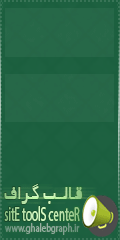
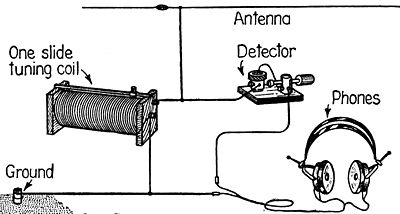

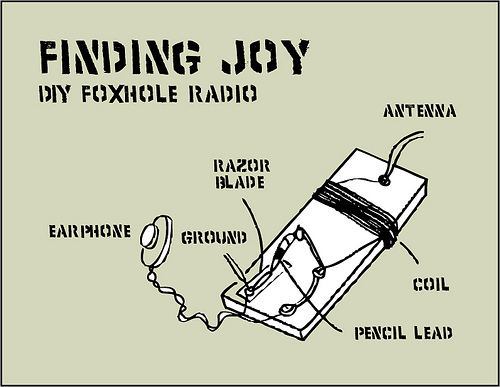

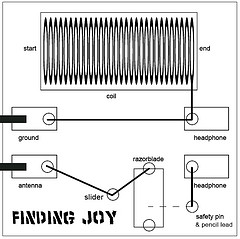
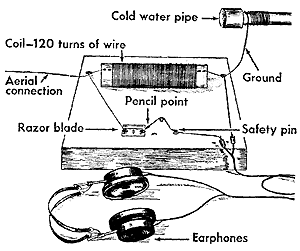
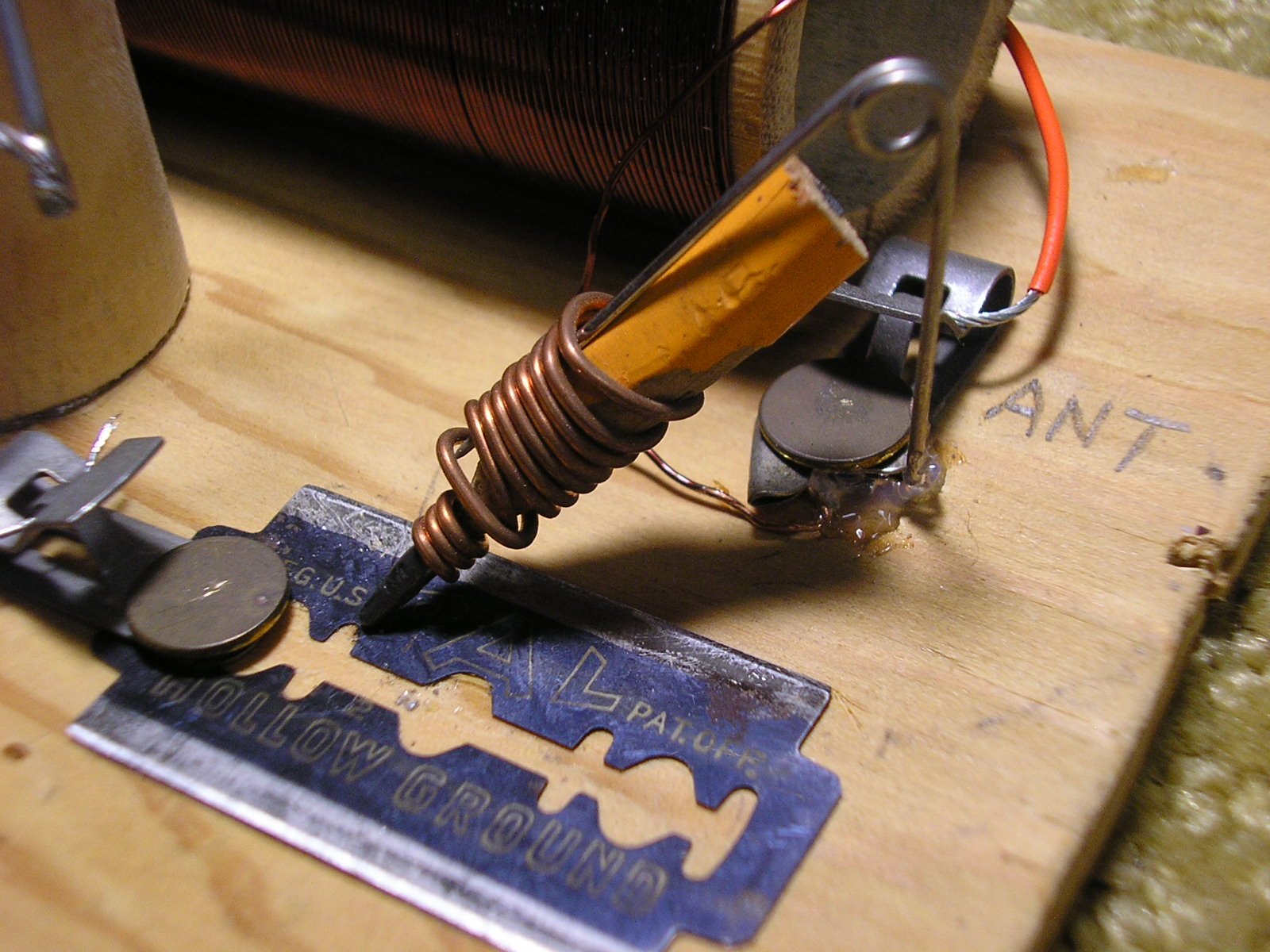
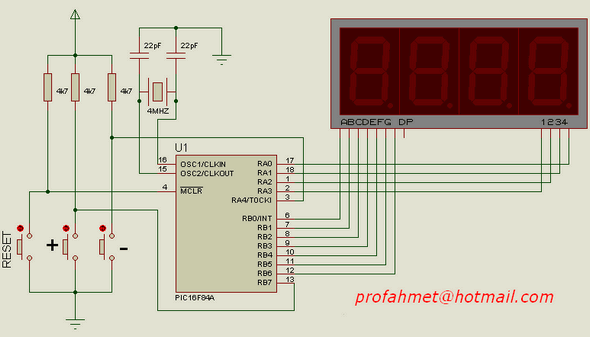

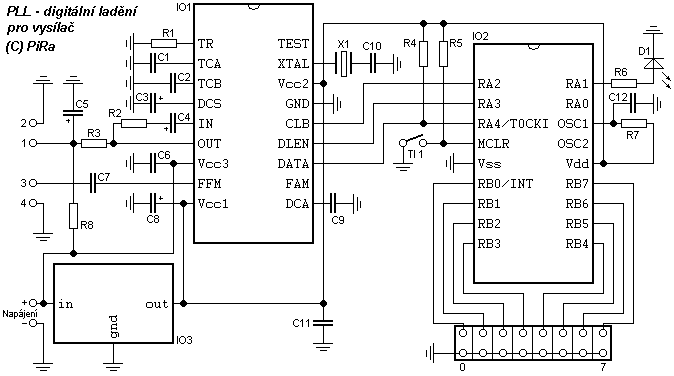
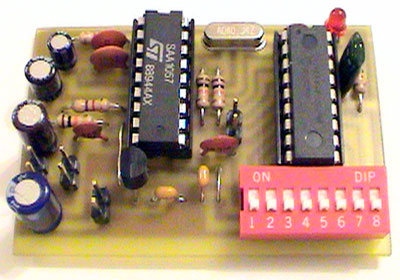
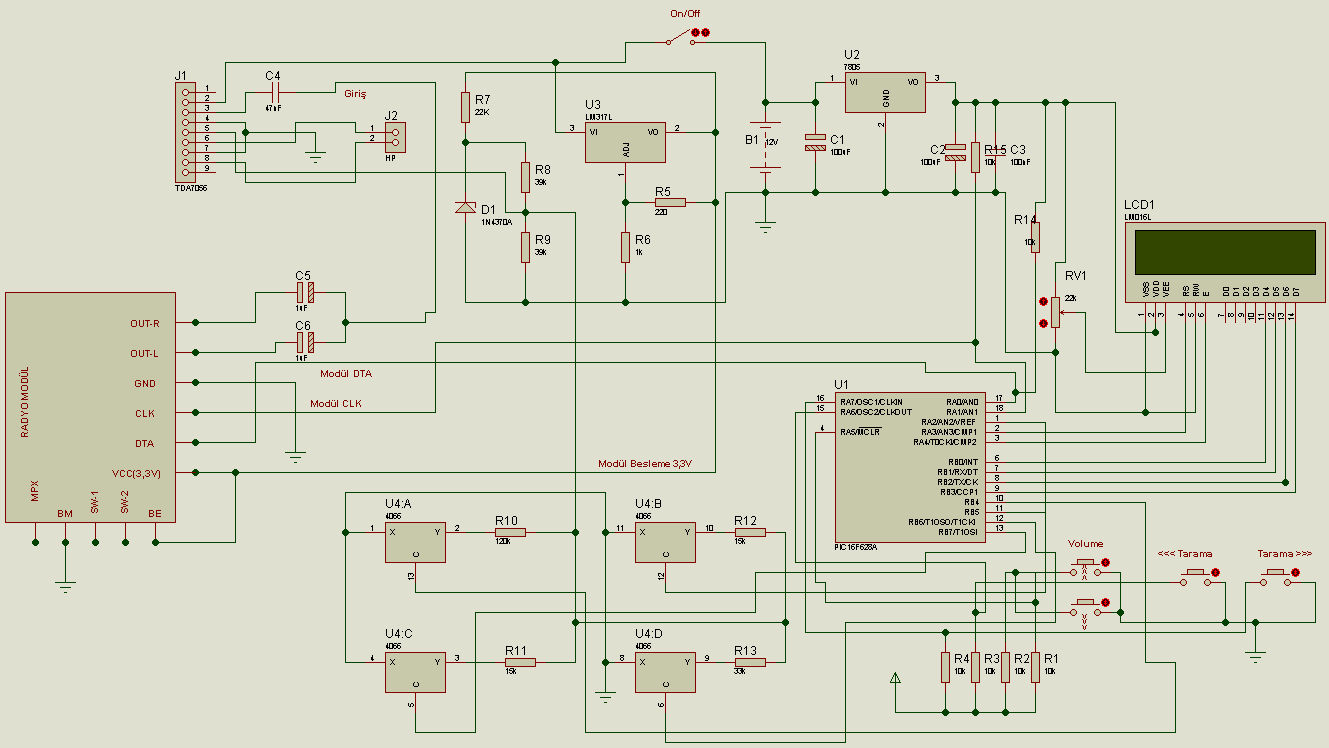
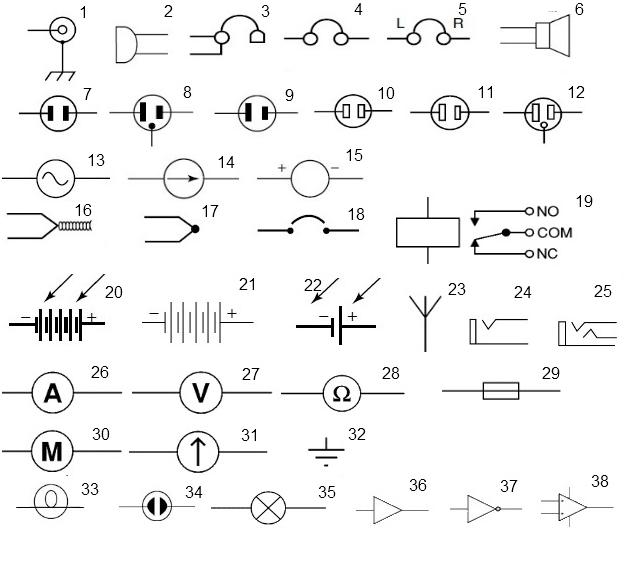




 Anyone can pass these exams, including the Extra exam, if they're willing to invest the time and study smart.
Anyone can pass these exams, including the Extra exam, if they're willing to invest the time and study smart.